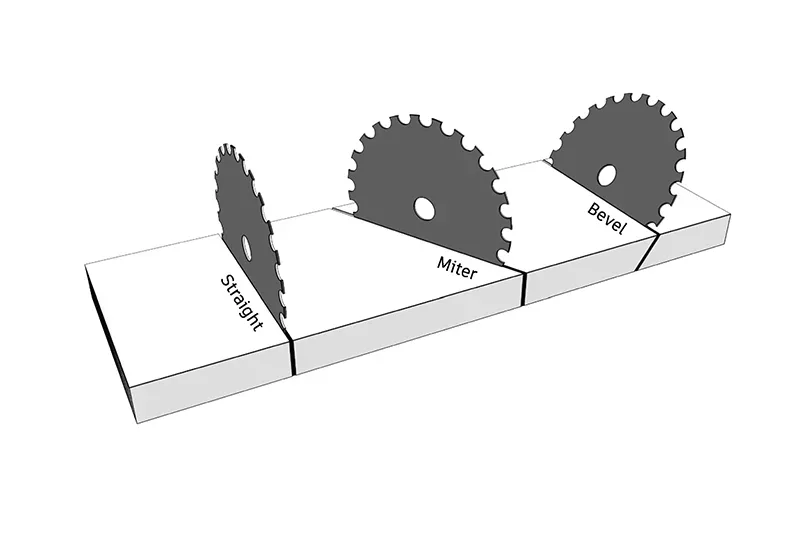Difference Conclusion:
A cut can be both miter cut and bevel cut, that is miter bevel cut;
Straight cuts can be considered as a 0 degree miter cuts and 0 degree bevel cuts;
Miter cuts, it is a stone cutting way used to form angles to two pieces of material, make them join to each other and form a right-angle corner with no visible seam.
Bevel cuts are another typically cutting way, mainly for edge profiling, it profiles an angled edge detail to the material, providing a decorative or functional effect.
Miter cuts and bevel cuts are two popular types of cuts in stone fabrication industries. Both cuts involve angled cuts, but they serve different purposes and have different applications. Here’s the difference between miter cuts and bevel cuts:
Miter Cuts:

Definition: A miter cut is an angled cut made across the width of the material at a specific angle, typically 45 degrees or any other specified angle.
Purpose: Miter cuts are primarily used to join two pieces of material at an angle to create a corner joint. When two pieces with miter cuts are joined together, they form a 90-degree angle, such as in picture frames or door frames.
Application: Miter cuts are commonly used in stone working & woodworking, particularly in trim work and furniture-making, to create clean and seamless corner joints.
Example: When cutting a piece of stone slab at a 45-degree angle, two pieces can be joined together to form a right-angle corner with no visible seam.
Bevel Cuts:

Definition: A bevel cut is an angled cut made along the thickness or edge of the material at a specific angle, creating a sloping edge or chamfer.
Purpose: Bevel cuts are typically used to add an angled edge detail to the material, providing a decorative or functional effect. They can also be used to remove sharp corners or edges for safety reasons.
Application: Bevel cuts are common in various industries, including woodworking, metalworking, glasswork, and stone fabrication, to create elegant and visually appealing edges on different materials.
Example: A bevel cut on the edge of a stone countertop creates a chamfered edge, which adds a touch of sophistication and eliminates sharp corners.
Summary:
In summary, miter cuts are angled cuts made across the width of the material to create corner joints, while bevel cuts are angled cuts made along the thickness or edge of the material to create sloping or chamfered edges. Both cuts have unique applications and are used in different contexts to achieve specific design or functional objectives.
